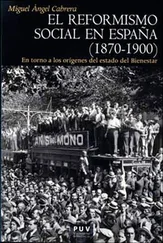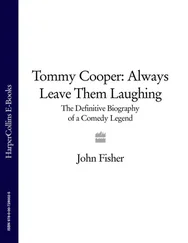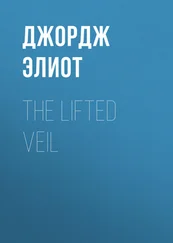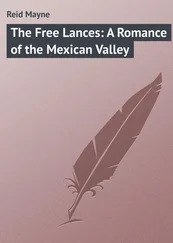Continuing with this singular research plan, I turned to the two children’s books that she published in 1980 and 1991. The first one is Smiley Snake’s Adventure , and the second one, Legs: The Story of a Giraffe . Smiley Snake’s story was illustrated by Bob Reese, whereas the one about the orphaned giraffe—her second attempt at writing for children—was illustrated by Ann Bauman. In any case, there is no personal information about the author in any of these two books. Kids do not care about the personal life of a writer. They do not care about the writer at all. They do not think for a minute about who is writing or drawing or why. They only care about Imburugutu and Smiley Snake, and what they are doing, or where they are.
However, I did find a new biographical blurb on the flap of the dust jacket of the only novel that she has published, And the Desert Shall Blossom (1991). In this story, A.P. Watkins, vice President of one of the companies in charge of the construction of the Hoover Dam during the earlier 1930s, helps the Jensen family to find a job. The Jensens have been traveling a lot, and they are excited about this new opportunity. The novel is an accurate chronicle of the construction through the compassionate perspective of Esther Jensen and her family’s disintegration:
Phyllis Barber teaches in the Vermont College MFA in Writing Program and serves on the editorial board for Weber Studies. She is the author of The School of Love and Legs: The Story of a Giraffe and her stories have appeared in numerous literary magazines and have received mention in Pushcart Prize XIII and The Best of the West 3 . Barber most recently received the Associated Writing Program Competition in Non-Fiction award for 1991. Raised in southern Nevada—Boulder City and Las Vegas—until the age of 21, she lived in Utah for twenty years and currently resides in Colorado with her husband and three sons.
Here again, I found a few more facts about her literary achievements. If I had read this account while picking the book off the shelf of a bookshop, I probably would have abandoned any hesitations that might still threaten to make me decide not to read the book. However, if I see this resume after I had read all her published books and articles—once I am looking for the phone number —I must underline a few important details. Probably, these details are not as visible or significant as that list of prizes. Her being a mother and her having been raised in Las Vegas and Boulder City are the two facts that I wanted to retain. I would even add a third one: that although she was raised in Nevada, she moved.
There were a couple more books to finish my accurate research. The next one I turned around to keep with my curious investigation was the collection of most of the short stories that, over a long period, she had published in magazines such as Sunstone or Dialogue: A Journal of Mormon Thought , and which had helped her to get the attention and honors that she enjoys nowadays. Parting the Veil: Stories from a Mormon Imagination was published in 1999 by Signature Books:
Phyllis Barber is the author of six books, including her prize-winning memoir, How I Got Cultured , and a contributor to Fiction: Crosscurrents’ Best , Literary Las Vegas , Great and Peculiar Beauty: A Utah Reader , and other anthologies, and has been honored in Best of the West (vols. 3, 6) and Pushcart Prize XIII. She has received awards from the Association for Mormon Letters, the Associated Writing Programs (affiliated university departments), Sunstone, and the Utah Arts Council. She is co-founder of the annual Park City Writers at Work Conference. Currently she teaches the MFA in Writing Program, Vermont College.
I did not find anything new. Following the line of her previously published books, in this account I found a list of her literary merits and a concise annotation on her work as a college professor.
When this book was taking shape and I had already forgotten my research on biographical accounts, Raw Edges: A Memoir was published. With reluctance and torpor, I went to see this new and last blurb. This time was short and succinct:
Phyllis Barber is the award-winning author of seven books, including an earlier memoir, How I Got Cultured: A Nevada Memoir . She teaches at Vermont College of Fine Arts MFA Writing Program and lives in Denver. She was inducted into the Nevada Writers Hall of Fame in 2005.
Raw Edges chronicles the years after, before and during Barber’s first marriage, based upon the axis of a trip on bicycle across the United States. It opens with an introduction, in which Barber talks with delicacy and vulnerability about the beauty of risk in connection with her identity as a woman and wife, but also concerning her communion with God, music, words, family or landscape. Barber explains that she is embarking into the telling of her “seven lean years of being lost” ( Raw 3). She recognizes her need for understanding “if not by no one else but myself” ( Raw 2). When I was turning back the page after reading the blurb, I came across a sentence that attracted my attention: “she had to redefine herself as a woman, mother and artist.” I realized then that those “raw edges” would tell me more than any possible account summarizing her life.
I came to the end of my research, after reading all the biographical accounts on the back of Barber’s published works, and, even though it is obviously just a metaphor—and not really what I was looking for—I did not find her phone number . I could not answer any of those questions that sometimes come to your mind after—or while—you are reading a book; those questions that Jarold Ramsey calls “speculations” or “the irresistible imaginative consequence of all stories” (130). It would not be difficult to find a few more facts about her life simply by typing her name in an Internet search engine. Finding an author’s biography is that easy in these days of information technology and worldwide website networks. Having taken advantage of this, let me summarize Barber’s life and literary career.
Barber was born in the Rose de Lima Hospital in Basic Townsite, present day Henderson, Nevada, but she was raised in Boulder City and Las Vegas. She holds a degree in music from San Jose State College, and she is a professional classical pianist, having performed several concerts and recitals. Later, she received a Master of Fine Arts degree in creative writing from Vermont College (1984), where she taught in the Writing Program from 1990 to present day. 2She taught as a Visiting Writer at the University of Missouri in Columbia during the spring of 1994 as well. Co-founder of the Writers at Work Conference in Park City, Utah, she also served on many different writing competitions, and she was inducted into the Nevada Writers Hall of Fame in October 2005.
Not only has she been successful in her careers as a musician and as a professor, but also as a writer, as can be seen from the numerous prizes that she has received. She has published seven books: the autobiography, How I Got Cultured: A Nevada Memoir (1994); the two collections of short stories, The School of Love (1990) and Parting the Veil: Stories from a Mormon Imagination (1999); her only published novel And the Desert Shall Blossom (1991); and the two books for children, Legs: the Story of a Giraffe (1991), and Smiley Snake’s Adventure (1980). Raw Edges: A Memoir (2009), her second autobiography, is the most recent one. It was released ten years after her last piece of fiction was published; Foreword Review listed it as one of the Outstanding University Press Books of 2010.
Читать дальше












